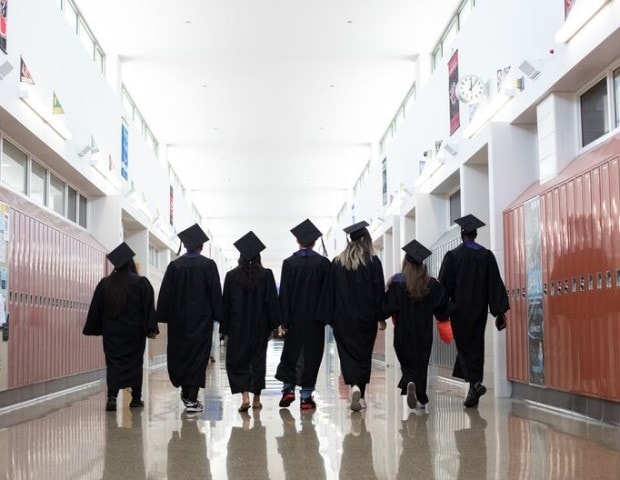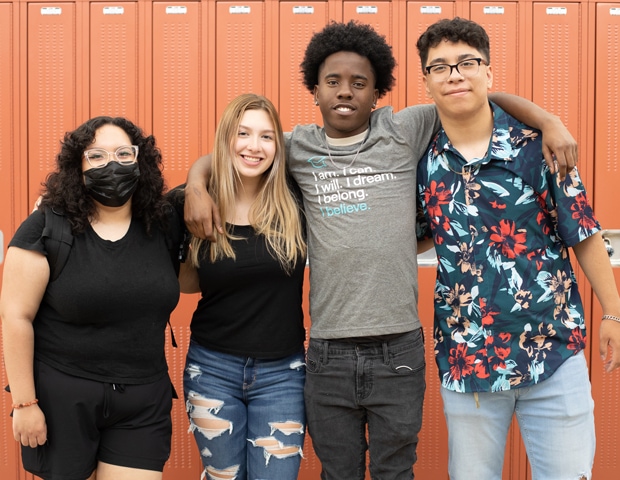Students from low-income backgrounds obtain college degrees at a much lower rate than students from high-income backgrounds. Schools can help close the degree divide by centering college and career readiness for all high school students.
Promoting Equity in Education: District administrators and stakeholders can provide equitable opportunities through culturally relevant teaching, leadership training, and targeted support for the most vulnerable students.
In any classroom, in any school, and in any district there are students of different backgrounds, with different needs, both personal and academic, and thus require different accommodations for success in school and beyond. School administrators, teachers, and community stakeholders should work to ensure that equity is at the forefront of their actions and decisions within their schools, classrooms, and communities to give students the best, most equitable opportunities to achieve success in school and create a meaningful life for themselves and their families.
District administrators should focus on quality professional development opportunities for teachers and staff, work to create culturally relevant teaching, foster strong programs for college and career readiness, and develop leadership skills for both students and teachers. Partnerships with programs like OneGoal create this equitable opportunity for students in high school and beyond, addressing the needs of students so that they can achieve their postsecondary goal of attending college, earning a degree, and becoming marketable in the job force or choosing a progressive pathway.
What is Equity?
If you work in education or have been to equity training, you have likely seen the graphic that depicts 3 people standing by a fence to watch a baseball game. Equality is giving each person a box so that they are taller and, thus, able to have a chance to possibly see the game. However, only the adult and taller child can see the game when given the one box. Equity is different. It gives people the tools they need to accomplish their goals, which may not be the same for each person. In the cartoon graphic, when the smaller child is given two boxes to stand on, then that child can see the game, thus achieving an equitable opportunity. Equality is universally giving resources and opportunities, while equity is giving more resources to the people who have the most need.
According to The Equity Collaborative, equity is defined as “the elimination of the predictability of success or failure by any social or cultural factor and the dismantling of inequitable practices and policies.” One can argue that some great obstacles are created by systemic social, cultural, economic, and educational constructs. However, forward movement can be made by districts if they commit to providing equitable opportunities and systems within their schools and communities.
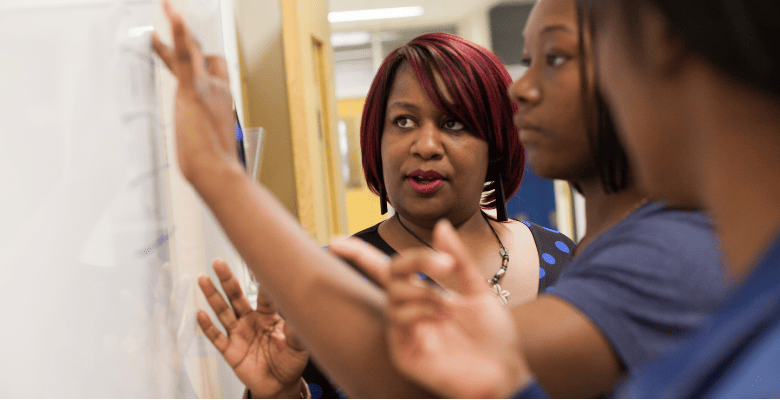
Disparities in Education
School districts and school leaders should first identify the inequities within their schools and community before moving forward with a prescription for solving the problems of low test scores, low graduation rates, low attendance, and other problems that many schools face. By identifying the failures, success may follow.
Some disparities in districts include poverty, racism, sexism, and classism, affecting students of color far more than any other group. These disparities can largely impact resources such as textbooks and personnel, teacher-to-student ratios, and access to activities and athletics, all of which enhance a student’s educational experience. The COVID pandemic highlighted many inequities in education. In an article by The Harvard Gazette, the author highlights how access to the internet, devices, or even the background to understand the technology is severely limited within areas of poverty and disparagingly lower for Black and Hispanic students. Fernando M. Reimers, Ford Foundation Professor of the Practice in International Education, even goes as far as to say that “We’re beginning to understand that technology is a basic right. You cannot participate in society in the 21st century without access to it.”
The impact of inequities within a school and community can have long-term consequences for affected students and the larger community. Studies have shown that for students from low socio-economic communities, the gap in school performance has continued to persist, thus perpetuating the achievement gap, degree divide, and pay divide for marginalized people. According to the Economic Policy Institute, these divides can be lessened by districts providing quality preschool programs, having meaningful and realistic opportunities for family engagement, and wrap-around services that include access to housing, nutrition, and health services for at-risk students. Emma García and Elaine Weiss, authors of Education Inequalities at the School Starting Gate, state “The undeniable relationship between economic inequalities and education inequalities represents a societal failure that betrays the ideal of the “American dream.”
How can District Stakeholders Promote Equity in Education?
There are several systematic strategies that school districts and school administrators can employ to combat inequities within their communities. Culturally responsive teaching, teaching to the “whole child,” and fostering inclusivity are strategies that can lead to equitable outcomes and opportunities for students.

Culturally Responsive Teaching
Teachers and administrators can foster a culturally relevant and responsive climate in their schools by raising the expectations of all students. This looks like encouraging marginalized students to enroll in Advanced Placement (AP) classes and giving these students the confidence to do the work, increasing rigor, and embedding coursework with opportunities for students to lead and have a voice within the classroom while ensuring that various cultures are authentically represented in the curriculum. Cultural representation can be achieved by viewing the curriculum through the lens of the students within a school community and ensuring that teaching practices and curricula are reflective of the student body.
Nurturing the “Whole Child”
According to “Four Ways Schools Can Support the Whole Child,” school leaders should foster relationships between families and schools and between teachers and students. When students have a safe place where they feel seen, they will find themselves in a position to truly learn and foster a love of learning. In short, every student should have at least one adult in the school community with whom they share a connection. Another way that students feel supported and are in the best environment for learning is when they find the material interesting and relevant to their lives. Including topics of interest, perhaps by utilizing student surveys, having capstone projects as assessments, and engaging in one-to-one conferences are ways to foster a sense of belonging and ownership over learning. Further, schools can have programs that “wrap around” families and students and help to support physical needs like food, housing, and access to healthcare while also being staffed with mental health professionals.
Fostering Inclusivity for Equitable Outcomes
Schools should emphasize funding programs that care for the physical, emotional, and academic needs of at-risk students and families. Most states define an at-risk student as coming from a low-income home, receiving free or reduced lunch, and/or receiving SNAP (Supplemental Nutrition Assistance Program) benefits. According to the Education Commission of the States, 24 states allocate their funding to at-risk students through the state’s primary funding formula. This means that if there is an increase in at-risk students, there is an increase in funding. Most states fund additional money for at-risk students from 12% to 40% more as compared to general education students. Using this funding to provide for adequate nutrition and health needs, having social workers and mental health counselors available in each school building, emphasizing literacy and math interventions, and ensuring that all students have access to laptops and hot spots to access the internet, are ways to gain equity in education.
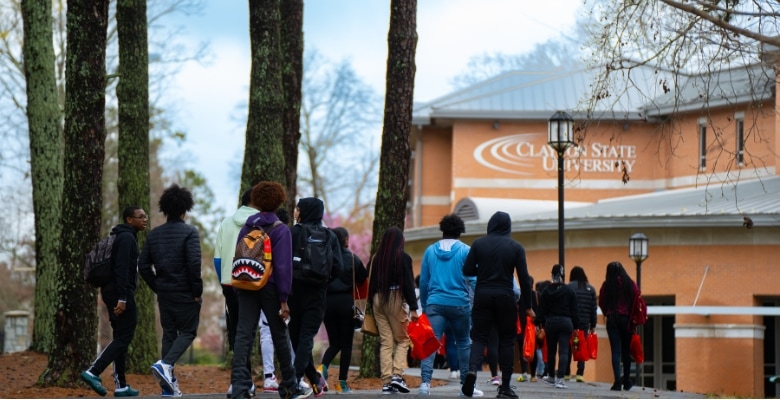
Breaking Down Barriers
In schools and districts where at-risk students are falling behind, and perhaps in all schools, stakeholders should ensure that leadership, administrators, and teachers are representative of the community. Likewise, teachers and school leaders should be trained and have professional development opportunities that address implicit bias, seek to overcome systemic challenges, and create a safe and inclusive environment. This professional development training should be ongoing, valuable, provide real-world application, and be steeped in research-based evidence. Professional development programs have the best chance of meaningful impact when they are continuously applied in all areas of the school, including decision-making, curriculum development, and empowering teacher and student voice.
“Before OneGoal, we didn’t have a good handle on what our students were doing after high school. We have a better handle on that now. One of our most important steps was for our OneGoal coach to work with us on a dataset,” Said Dr. Sharon Williams, Deputy Superintendent at Proviso Township High School in Illinois. “We worked with our OneGoal coach to understand where our gaps were. This helped our team wrap our minds around what were manageable goals for us in Year 1. We added the classroom model in Year 2 and that’s been highly successful for us.”
Inclusive Hiring Practices and Representation
Schools can foster a sense of belonging by changing hiring practices to include a balanced match of ethnic and gender representation. Using social media and marketing strategies, attending or hosting community events, and creating a bias-conscious approach to resume reading, interviewing, and hiring systems can make a deep impact on creating a more inclusive school culture. When students see themselves represented and reflected by teachers and school leaders, it allows them to imagine a successful future, set goals for themselves, and work hard towards those goals. Studies have shown that academic performance increases when students of color are taught by teachers of color. The influence of these teachers may include an increase in math and reading scores, an increased goal to attend college, and improved graduation rates.
Equitable Programs
Programs like OneGoal aim to break down barriers and establish equitable norms within schools. OneGoal’s classroom-based model provides a three-year, bias-conscious, and equity-driven program to ensure that students can reach their full potential and attend and graduate from postsecondary pathways. OneGoal offers knowledgeable support through an engaging curriculum and consistent teacher mentoring, financial literacy education, and step-by-step guidance through the college application and enrollment process. OneGoal also assists teachers, or program directors, through targeted guidance and professional development opportunities. “We help school and district leaders assess their current postsecondary readiness, build capacity and community with other leaders, and receive ongoing one-to-one coaching,” OneGoal staff noted in the webinar District Level Postsecondary Solutions. Further, students in the OneGoal classroom-based program have continued support in college. When students of color and low-income, at-risk, and marginalized students have equitable opportunities, they can achieve economic mobility. These students can improve their economic status, as compared to the previous generations, when they are supported in all areas of need and are encouraged to dream big.

Moving Schools Forward
Though there are many barriers to achieving equity in education, there are also many proven steps that schools can take to ensure that all students, especially those at most risk, can achieve and thrive. Ensuring that the whole child approach is taken into consideration and attending to the physical, social, and mental health needs of students is the base for equity. Administrators and decision-making stakeholders need to lead schools with equity at the forefront of their thinking. Once students’ basic needs are addressed, leaders should ensure that marginalized students have access to rigorous content and courses and are encouraged to seek postsecondary plans. Before integrating any programs, making any decisions, and taking any steps to move a school forward, school leaders should ask themselves “Does our school programming provide equity, and are the district decisions creating opportunities for all students to achieve success?”
Leah Zell is an educator with 23 years of experience in schools as an athletic trainer, teacher and dean of students, both in the private school and public school settings. Her education consists of a BS in Athletic Training from Springfield College and a M.Ed in School Leadership from The George Washington University. Most recently Leah has worked as a classroom teacher at New Bedford High School teaching various electives and had been a Program Director with OneGoal for 2 years. She is currently supporting fellows in Year 3 as they embark on their journey through their freshman year of college.
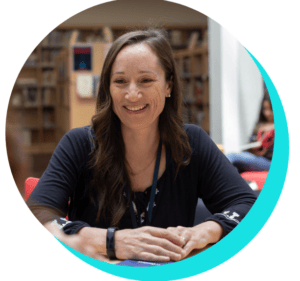
Related Stories
How can we match students with colleges and other pathways that align with their personal and professional goals? Which institutions are supporting the social-emotional needs of students? and more.
Establishing an equitable education environment is vital to helping students achieve their goals, but how can teachers and schools put this value into action?



